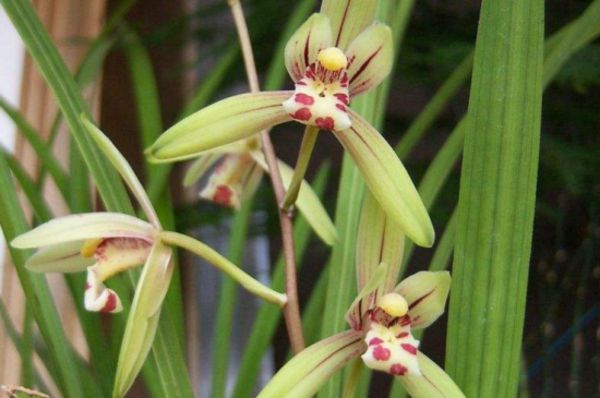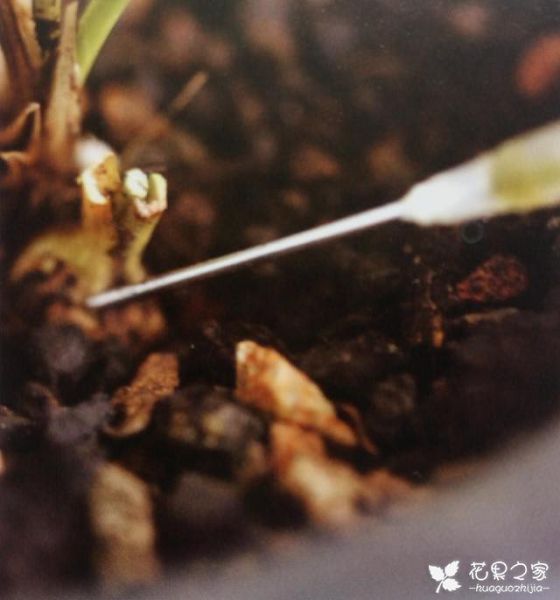Symptoms and control methods of anthracnose of potted orchids

Orchid anthracnose, also known as black spot, brown spot, is caused by orchid anthracnose, mainly harms leaves, but also harms stems, is a common and important disease of orchids. Orchid anthracnose not only seriously hinders the growth of orchids, but also seriously affects the ornamental value, especially some foliage-based varieties, so the editor will talk about it today.
I. causes and symptoms
The pathogen of anthracnose is a fungus of Alternaria, which is mainly caused by leaves. Light brown depressions will appear on the leaf surface at the initial stage of leaf damage, and there are many small black spots arranged in wheels in the later stage of the disease. Leaf tip damage, the leaf surface will appear a number of dark brown spots, and many small black spots.
Second, the law of the disease.
Orchid anthracnose occurs throughout the year, generally serious under the conditions of high temperature and humidity, poor ventilation, partial application of nitrogen fertilizer and lack of light, it is also easy to induce anthracnose, when the rainy weather suddenly turns sunny, the disease is serious. Once you get the disease, if it is not treated in time, the disease will occur year after year.
III. Prevention and control methods
1. Daily cultivation and management
(1) strengthen cultivation management and pay attention to environmental ventilation and light transmission.
Closed orchid cultivation should strengthen ventilation and light management; reduce air humidity in high temperature and rainy season and avoid muggy heat; orchid planting density should be reasonable and there should be a certain distance between pots.
(2) timely removal of diseased leaves
In the early stage of the disease, the leaf tip with disease spot should be cut off in time, and the cut mouth should be 1-2cm away from the disease spot.
(3) watering the diseased orchid is best without the whole plant watering method.
After the orchid disease, the whole plant spray method should be used to water the orchid, which is conducive to the spread of bacteria.
(4) strengthen drug prevention and treatment.
At the initial stage of the disease, the whole plant was sprayed for 2-3 times, every 7-10 days. The main medicaments available were as follows: 1000-1500 times of 50% imipramine manganese salt wettable powder, 1500 times of 25% prochloraz EC, and 3000 times of difenoconazole water dispersible granules.
2. Non-pesticide prescription for prevention and control of anthrax
(1) quicklime water
First, the quicklime was aged with proper amount of water, then the aged quicklime powder and clear water (according to the ratio of 1: India) were put into the container, and then the clarification solution was sprayed with orchid plants to prevent anthracnose and white silk disease.
(2) Chinese chive juice
The mixture of leek juice and clear water at 1:60, and then sprayed on orchid plants, twice a day, can effectively control anthracnose.
(3) garlic to control anthracnose.
After mashing the garlic bulb, add 10 times water to stir, impregnate and filter the juice, and dilute it 20-30 times, and then spray the orchid plant, which can not only play a role in sterilization, prevention and control of anthrax, but also kill insects and promote the growth of orchids.
(4) Prevention and control of anthracnose with vinegar
Pour 1 tablespoon of vinegar into 1 kilogram of water, stir evenly and spray the leaves of orchid plants. Vinegar can also be added to some acidic or neutral pesticides to prevent anthracnose.
Related
- Is the orchid suitable for indoor use? Is it good for the body?
- How to prevent the empty root of orchids?
- What to do after the crab claw orchid is withered?
- Why are the leaves of orchids always yellow? Fertilizing and watering.
- Can the root of the gentleman orchid be saved if it is rotten?
- Diagnosis and treatment of cotton-blowing beetle insects in Cymbidium
- There is a way for a gentleman's orchid to rot.
- What is the most suitable temperature and humidity for the orchid?
- How to raise a gentleman's orchid? Cultivation techniques of Cymbidium
- How to prepare the nutritive soil for the cultivation of Cymbidium



